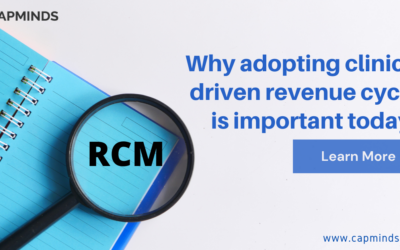How To Improve Patient Referral Tracking Process?
In today’s competitive healthcare marketplace, healthcare providers and expert teams are looking for new ways to attract their patients. Patients have greater options to go for. They are looking for quick ways to access their care and the features which save their valuable time. The traditional methods to attract patients are also effective today, but you need more to stand apart from the competition. Here are the 4 smart steps to improve your patient referral tracking process.
4 Step Guide To Patient Referral Tracking Process
1. Choose the right platform by evaluating your current process
The initial step is to assess your present patient referral process, including your referral tracking software. In the event that healthcare providers are utilizing a processor stage, ask how regularly they use it and what they like and don’t care for about it. Search for promising circumstances for development. For instance, is referring patients a multi-step or manual cycle? Medical services experts are constantly in a hurry; flipping between siloed stages removes time from the patient and at last slows processes.
Whenever you have received feedback from your group and assessed your requirements, search for an answer that can uphold patient rreferrals, multi-channel referrals, and full-cycle following from the chance to current patients. This will help improve on the patient management user experience and assist your group with getting onboarded and utilizing the platform quicker.
2. Start To Build a provider network
To make an effective patient referral tracking program, you should make a data set of supplier profiles. This will be utilized in work processes, permitting you to coordinate with patients’ requirements with the correct suppliers flawlessly and help guarantee that patients are alluded inside the organization. For instance, in the event that they have another condition, rather than the patient doing research and searching for a provider out of organization, the primary care physician can suggest an in-network care team.
Fostering a work process that coordinates with the patient with the most proper provider and guarantees the patient and provider complete an appointment is the way to driving downstream income. Correspondence with the patient and the getting expert is additionally indispensable to the interaction. Outreach options include email, text, or a basic call to stroll through the referral and the supplier or office coordinating with process.
Building a healthcare provider network is additionally an incredible chance to teach your prompt and expanded groups and gain buy-in. Detail the advantages of in-network references, including better patient care just as better revenue management. By showing your provider group the significance of patient referral tracking, you can help improve the strength of your organization as a whole.
RELATED: ARE YOU FACING REVENUE LEAKAGE IN YOUR CLINIC?
3. Measure Referrals And Create actionable insights
At last, healthcare providers need to gauge their referral process to know whether it is successful. So the most important features of patient referral tracking software are the ability to analyze data so you can create actionable measures. By estimating your referral process, you can see which patients are remaining with a specific healthcare provider or staying within the healthcare system.
It’s additionally critical to know when patients are alluded out of organization, which causes “leakage” (loss of income related with references out of organization). You may need to likewise go more granular, cross-referring to freely accessible quality information with provider ratings to acquire further experiences concerning why patients are picking specific providers or health systems.
RELATED: HOW RCM SYSTEMS FOR HOSPITAL LABS BOOST ROI?
4. Communicate Effectively With Patients & Providers
Traditionally, the patient referral tracking process has been a uninvolved interaction: An essential primary care provider illuminates the patient that the person needs to see a specialist or have a test completed. Somebody in the expert’s office could possibly contact the patient to proceed with the subsequent stages, so eventually, the onus is on the patient to finish.
Patient referral tracking is a continuous process that requires the healthcare teams to work together. This requires some exertion, however it’s made simpler with the correct referral tracking software. It’s likewise a chance to routinely interface with different healthcare providers, just as your patients. This communication is vital for improving results and expanding overall satisfaction and allows for more unified care management.
Final Thoughts
As healthcare is becoming more and more competitive, the need for a patient referral tracking system is also growing. Apart from attracting and retaining your patients, the patient referral tracking process helps you to connect providers for more collaborative care.
CapMinds revenue cycle management services help you to effectively connect your providers, manage practice revenue and provide quality care. To learn more about how CapMinds will help you in referral tracking management, contact us today.


